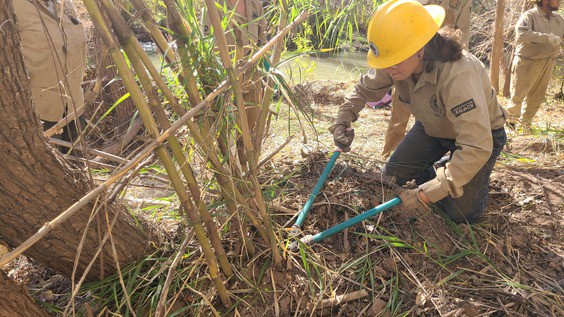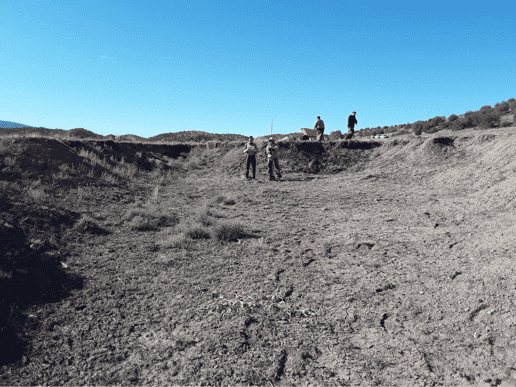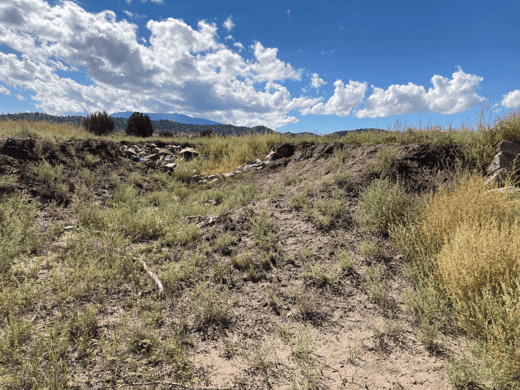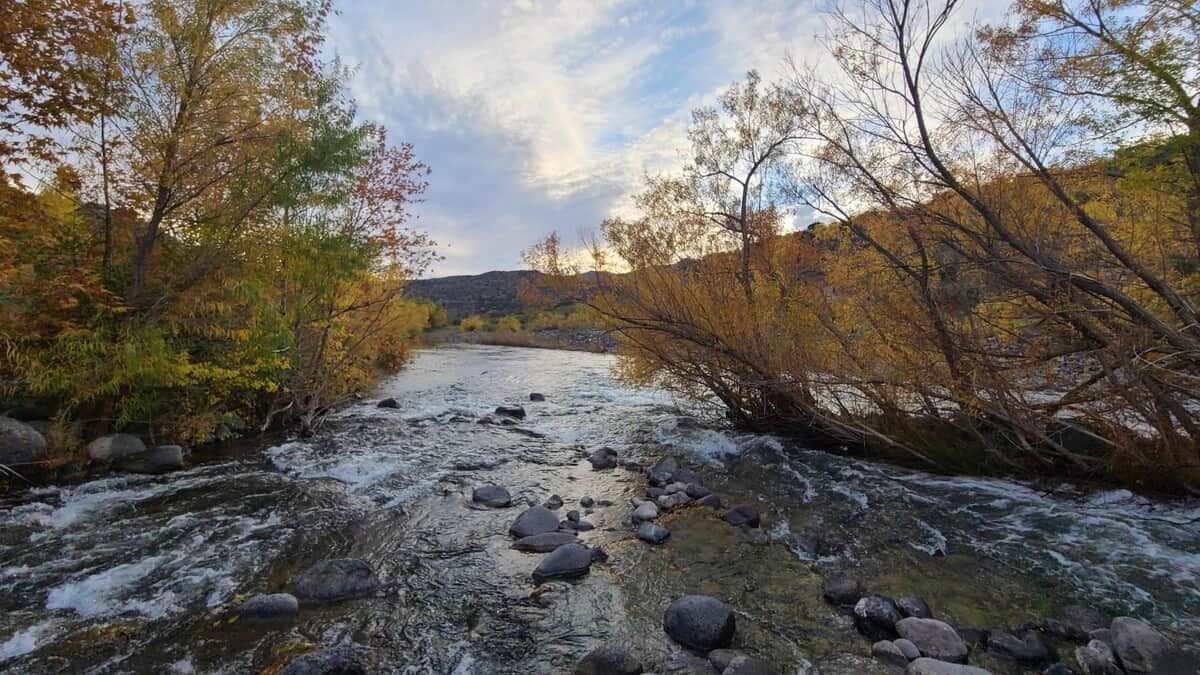Tracy Stephens, Program Director, and Nancy L.C. Steele, D.Env, Executive Director, Friends of the Verde River
Friends of the Verde River (Friends) is a non-profit located in Cottonwood, Arizona, that implements on-the-ground habitat restoration projects, facilitates regional coordination of watershed conservation, and informs statewide policy from the local perspective on sustaining river flows. Since its founding in 2011, Friends has grown into an organization with professional staff implementing conservation in the Verde River Watershed at a landscape scale.
Located in central Arizona, the Verde River is one of the few remaining free-flowing, perennial rivers in Arizona. The Verde River’s riparian areas provide critically important resources for humans and wildlife. Invasive plants negatively impact ecosystem function by degrading wildlife habitat and soils, disrupting flow and fire regimes, and altering vegetation structure, river geomorphology, and biodiversity.
Since 1990, flow in the Verde River has been steadily declining. From 1990 to 2020, flow declined by 34 percent in the Upper Verde and 41 percent in the Lower Verde Valley. The downward trend suggests that at some point in the not-too-distant future, the Verde River may not flow year-round. Friends and our partners are taking many steps to address this challenge.

In 2010, Verde Watershed stakeholders gathered to discuss how to manage invasive plants on a watershed scale to protect the Verde River watershed. These workshops resulted in the creation of the Verde River Cooperative Invasive Plant Management Plan and a community-based public-private partnership, the Verde Watershed Restoration Coalition (VWRC – pronounced “vee-work”). VWRC is a stakeholder-driven collaborative with over 25 partner organizations and 250 private landowners. Since 2011 over 12,000 acres of riparian habitat within the Verde River watershed have been treated for the four invasive species of focus – tamarisk (Tamarix spp.), tree of heaven (Ailanthus altissima), giant reed (Arundo donax), and Russian olive (Elaeagnus angustifolia).
Collaboration across agencies, parcel boundaries, and organizations is necessary when tackling watershed-wide restoration. Friends convenes VWRC, which shares our mission of working collaboratively for a healthy, flowing Verde River system. Over the past decade, we have invested over $5.5 million in watershed improvement. The partnership historically focused on the removal of invasive plant species from riparian forests while recognizing the need to address other threats. In 2019, Friends and VWRC completed a strategic plan and expanded their capacity to address wildlife corridor protection, upland habitat restoration, water quality monitoring, community science, and volunteerism in addition to riparian restoration.
The Verde River system has a large variety of native plant species that provide wildlife habitat and promote a healthy river system. Fremont cottonwood and Goodding’s Willow riparian forests, found in the Verde River watershed, are among the most threatened forest types in the United States. Friends works with private landowners and public land managers to remove invasive plants in riparian areas to restore this forest type. In addition to removal of invasive plants, we conduct regular monitoring and maintenance to protect the investments to restore and protect these valuable native plant species.



A growing area of focus is reducing erosion and replenishing groundwater through habitat restoration in upland areas, away from the riparian zone. Erosion gullies are the result of water running too fast downhill, uprooting plants, and removing topsoil. With our partners, we install low-tech structures using rocks to slow water down and begin the process of healing erosion gully systems. When water slows, it percolates into the groundwater, refilling aquifers. As water slows down, it also deposits soil, building resilience of the local landscape and allowing plants to regrow. The ground becomes a better sponge, soaking in the rain.
Over the first decade of restoration work on the Verde, Friends and our VWRC partners have learned how important it is to create a vision collaboratively, so every participant has shared ownership in that vision and the development of goals and strategies to address the conservation objectives. In addition, sharing data with all partners allows for more input on adaptive management and increases the impact of our work through shared learning.
The focus of the partnership on a watershed-wide approach to collaboration ensures that conservation efforts are effectively implemented by being strategic and focused on project development and adaptive management. To learn more, please visit our website.

